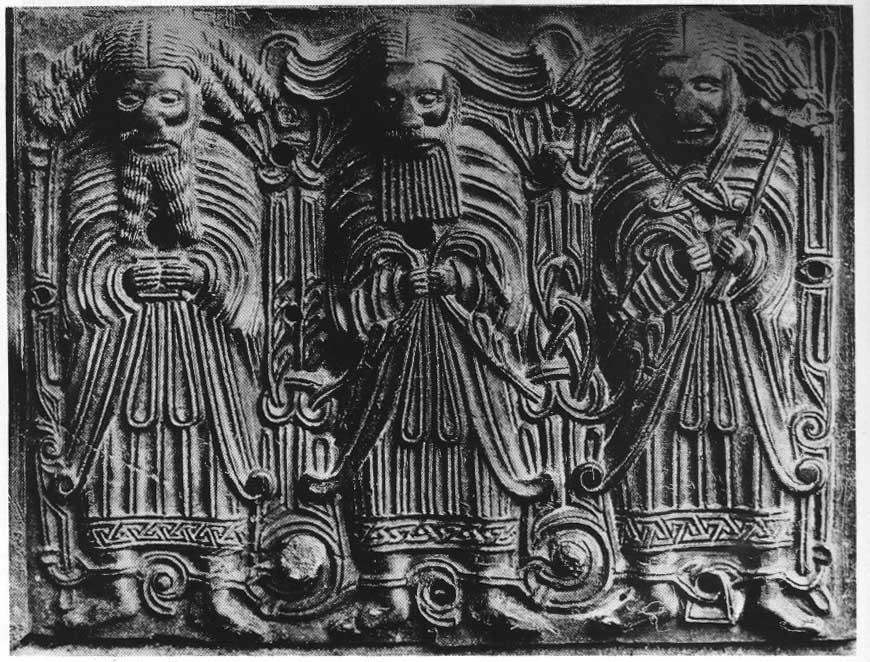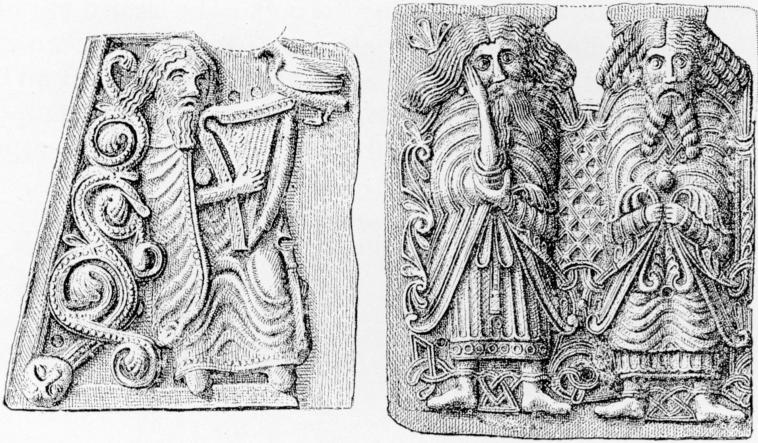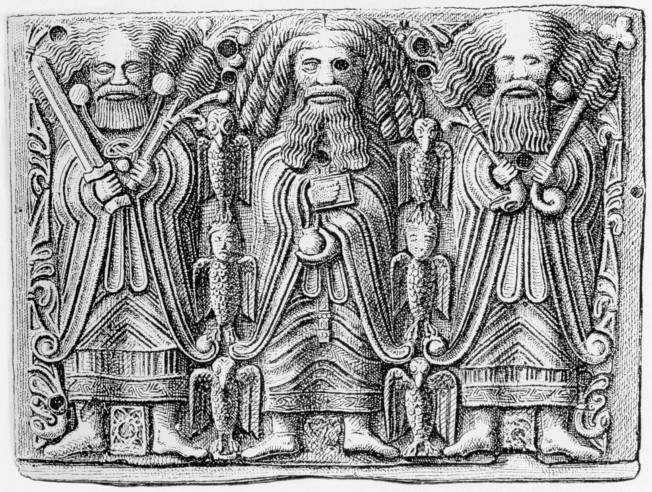
Try Amazon Audible Premium Plus and Get Up to Two Free Audiobooks
The Breac Moedhóc,
a bronze Irish house-shrine from the 11th or 12th century









The Breac Moedoc, or shrine of St. Moedoc, is probably of the ninth or tenth century, and is mentioned in an Irish manuscript, Life of St. Molaise, of the thirteenth century, now preserved in the library of the Royal Irish Academy.
It has been suggested that the name of this shrine was originally the Bracc Moedoc, which prefix was an ancient Irish word for hand, this meaning that is was the shrine of St. Moedoc’s hand. A thirteenth-century legend states that it was brought from Rome by St. Molaise, and by him given to St. Moedoc ; but this is absolutely contradicted by the workmanship of the shrine.
Whether it contained a hand or any other relics of the saint in no way affects the fact of its being the shrine of St. Moedoc, the founder of the monastery at Ferns in the sixth century.
The shrine of St. Moedoc had been preserved for many centuries in the church of St. Moedoc at Drumland ...
Reference: Wall, J. Charles, Shrines of British Saints, Methuen & Co., London. 1905. Chapter Four.
Referenced on p102, Arms and Armour of the Crusading Era, 1050-1350, Western Europe and the Crusader States by David Nicolle
248 Shrine of St Maedoc, gilt bronze casket, Ireland, 11th century
(National Museum, Dublin, Ireland)
St Maedoc, otherwise known as Aidan of Ferns, is probably not the subject of this small figure, which carries a sword and a scourge. The weapon has a blade with almost parallel edges which turn at a sharp angle to meet at the tip. Such weapons have been found in Ireland but are normally dated from the 7th to 9th centuries. The broad bar-like pommel of the weapon is also distinctive. The discs on either side of the man's face are rivets forming part of the structure of the casket.